3 beginner’s yoga exercises for building strength
Get started with beginner’s yoga exercises, with step-by-step advice from an expert yoga teacher
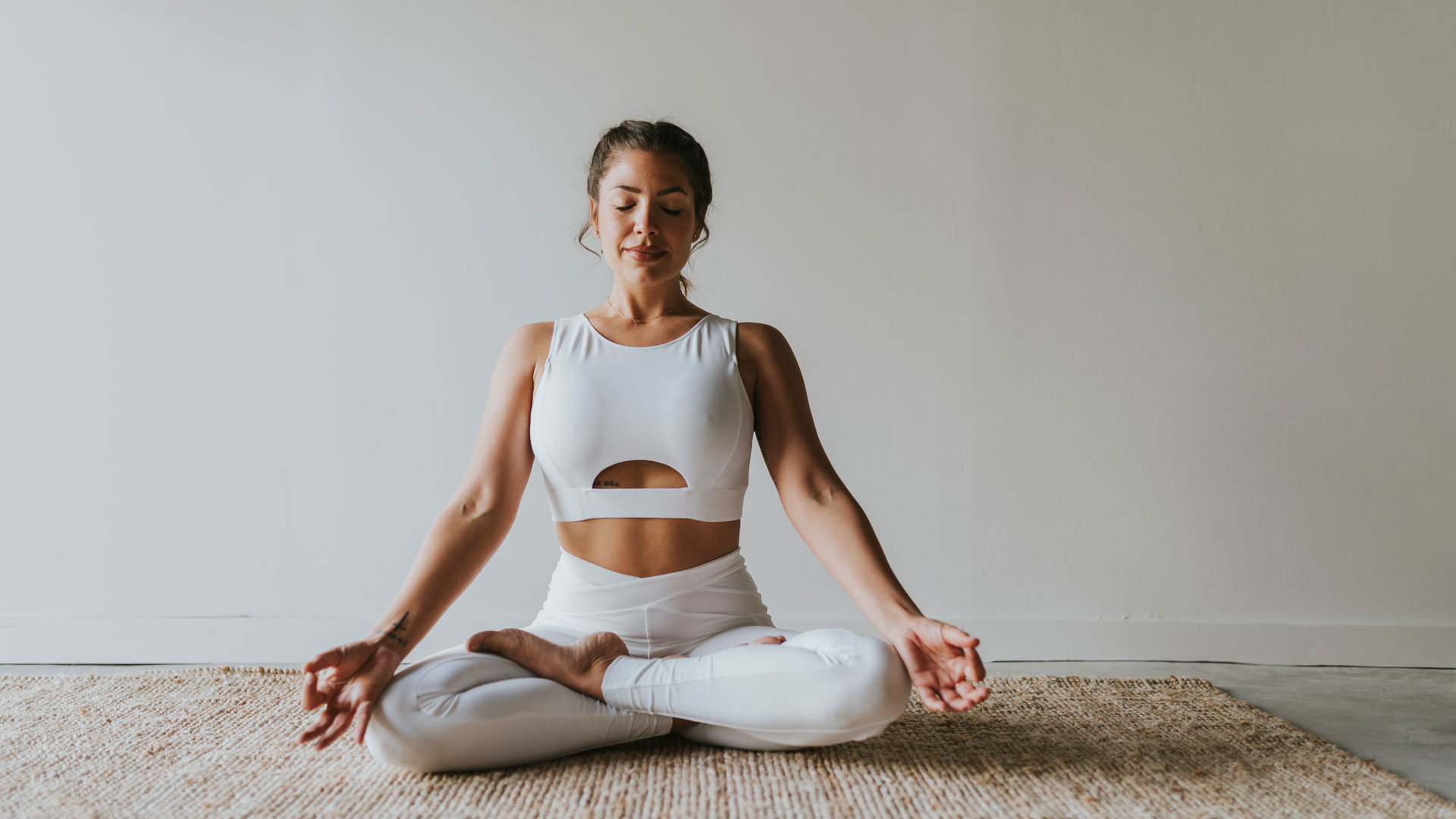

If you’ve been looking for beginner’s yoga exercises, look no further. Yoga is an activity that everyone can benefit from and enjoy, no matter their age, body size, or fitness level. The advantages of yoga exercises have been extensively documented and best of all, you do not need to be super flexible or a ‘pro’ to start reaping the wide and far-reaching benefits.
Award-winning yoga instructor, Sarah Highfield qualified as a yoga teacher over seven years ago and has created a yoga routine specifically for Fit&Well readers to get started with.
Outlined below is a summary of the physical and mental benefits of practicing yoga, along with three easy-to-follow beginner’s yoga exercises (including step-by-step instructions on how to do them), that you can try from the comfort of your own home.
To help you get started, take a look at our guide to the best yoga mats.

Born in Hong Kong and based in London, Sarah Highfield is the founder of Yogagise Yoga. Sarah qualified as a yoga teacher in 2015 and has since taught at prominent studios including Bodyism, Indaba Yoga & Yogabambam Hong Kong; taught on international yoga teacher trainings, as well as at high profile events including Om Yoga Show London and World Yoga Festival. Additionally, Sarah runs her own yoga retreats, alongside special collaborations with Helios Retreats, Manduka, Lululemon, London Fashion Week, Mortimer House, Shangri-La Hotel & Catherine’s Antigua. She was also voted 2020 Yoga Instructor of the Year by Lux Life Magazine.
Beginner’s yoga exercises: What are the benefits?
Yoga offers practitioners many physical and mental health benefits. Not only does yoga help to strengthen your body, develop your sense of balance, decrease anxiety levels, and calm your mind; but its physical and mental health benefits have been proven in a University of Maryland study to be just as effective as more traditional forms of exercise, such as working out in the gym. The research revealed that practicing yoga appeared to be equal or superior to traditional exercise in nearly every outcome measured, except those involving physical fitness. Furthermore, yoga exercises have been shown to be equally effective at managing stress and boosting mindfulness for both beginners & experienced yogis alike, according to a report by Springfield College, Massachusetts.
Strengthens the body
Yoga is an excellent way to strengthen and tone your body thanks to the wide variation of yoga poses and styles of yoga to choose from. Many yoga poses require both physical strength and mental focus, and the longer you hold a pose, the more strength you will build. The best styles of yoga for strength building are power yoga and vinyasa flow yoga.
Get the Fit&Well Newsletter
Start your week with achievable workout ideas, health tips and wellbeing advice in your inbox.
Develops a sense of balance
As we age, our sense of balance can decrease, leading to falls and injuries. Physical balance is a big component of yoga, and many practitioners find the more they practice balancing poses, the easier they eventually become, which has real-world benefits when applied to everyday life. This is corroborated in an International Journal of Yoga study, which also points toward yoga being beneficial for improving balance and coordination.
Decreases anxiety levels
A NYU School of Medicine report confirmed that yoga improves symptoms of anxiety disorder. Restorative and slow styles of yoga are effective at activating your parasympathetic nervous system, which stimulates rest and repair throughout your body. This activation reduces your blood pressure, decreases your heart and breathing rate, and signals your muscles to relax.
Calms the mind
Both the physical part of yoga, called Asana, and yogic breathing exercises, called Pranayama, can help to reduce levels of cortisol (stress hormones) in your body through slow movements and controlled breathing. Simultaneously, this releases stored tension in your body, brings all your senses into the present moment, and promotes a sense of inner peace.
Beginner’s yoga exercises to try
Beginner’s yoga exercise 3: Reverse Warrior Pose
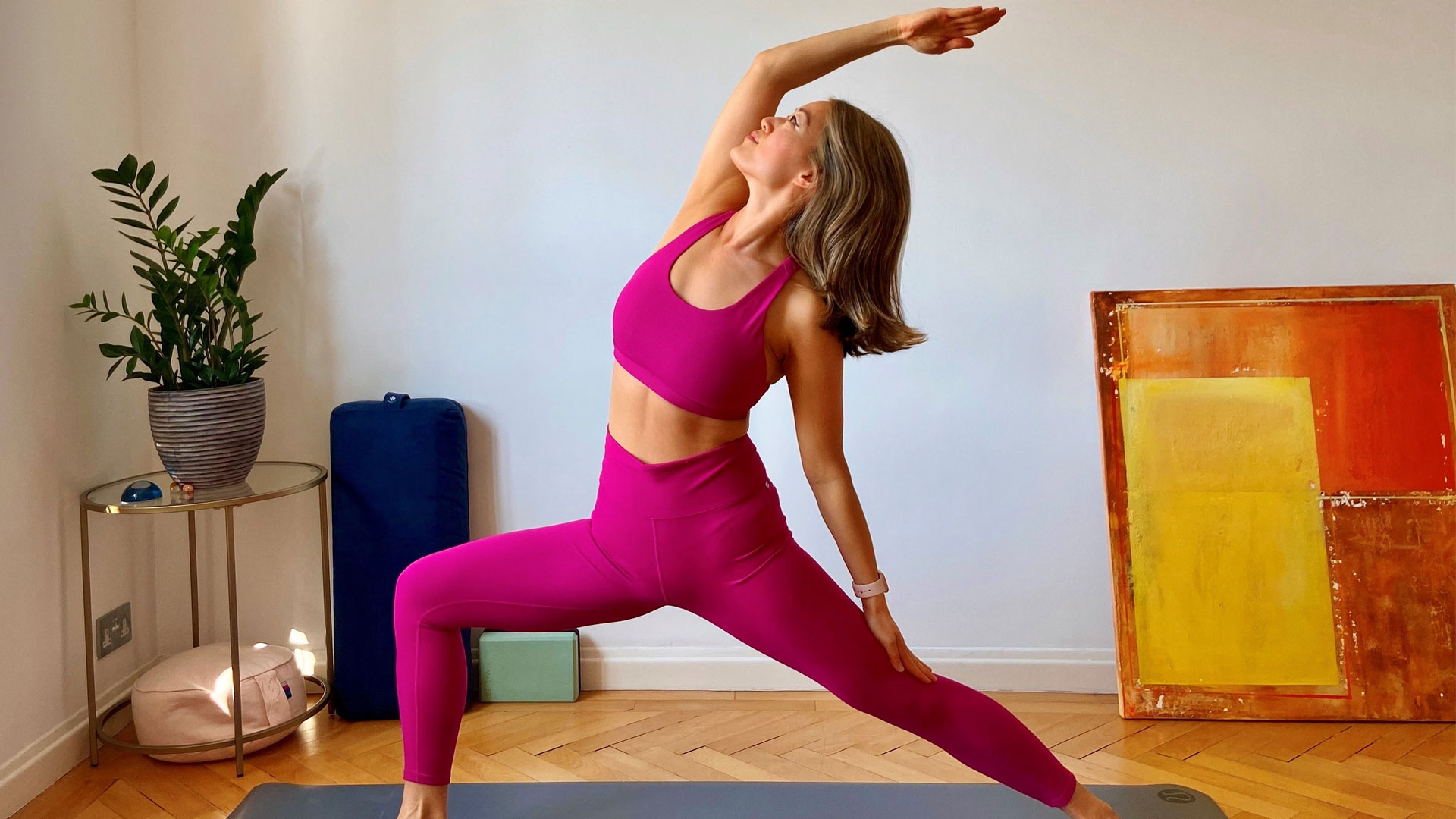
- Start in downward-facing dog. Step your right foot between your hands, come up to standing, keeping a deep bend in your right knee and your left leg straight.
- Lift your right arm up towards the ceiling and lower your left hand onto your left thigh for support. Look up at your right hand.
- Engage your core, lift your chest up, relax your shoulders and lengthen through your spine.
- Hold for five deep breaths.
- Repeat on the second side.
Expert tip: Enter this pose with grace, move with awareness, and feel your inner strength and focus spread from the inside out. Avoid this pose if you have recent or chronic hip, knee, back, or shoulder injuries.
Benefits of this yoga exercise: This pose stretches and opens the front & sides of your body, releasing tension and allowing for more unrestricted, deeper breath. Additionally, it strengthens your legs and shoulders; and stretches your hips and inner thighs.
Beginner’s yoga exercise 2: Wide Legged Forward Fold
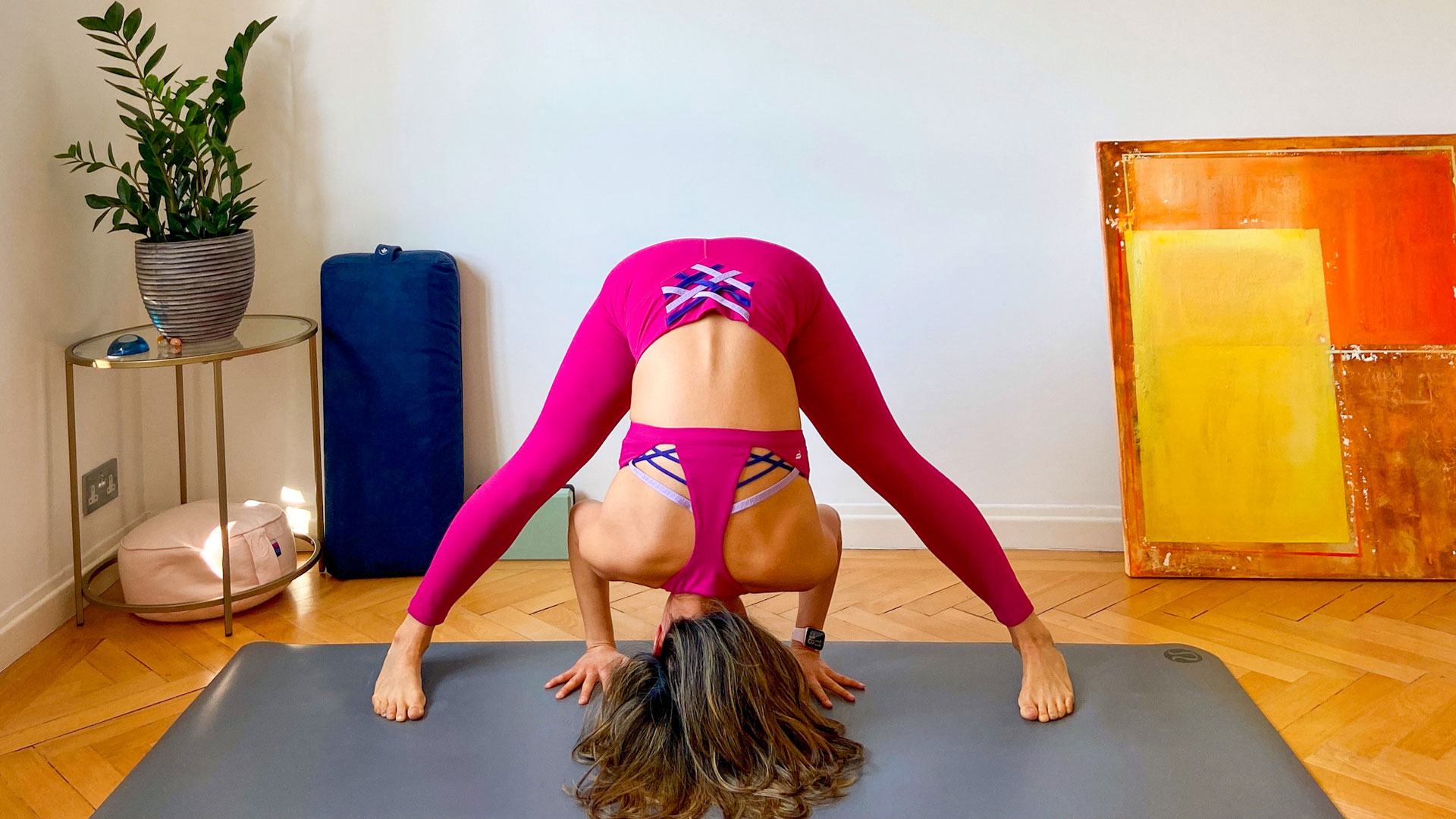
- Stand with your feet wide, ensuring the outer edges of your feet are parallel.
- Keeping your legs engaged and straight, slowly hinge forward from your hips and place your hands on the floor.
- Keep your legs straight and your spine long, and allow your upper body to feel heavy.
- Stay here for five deep breaths.
Expert tip: Allow your breath to guide you deeper into the pose; each time you exhale, try to soften a little deeper into the stretch.
Benefits of this yoga exercise: This pose relaxes your brain and relieves mild depression. It also eases anxiety and fatigue and stretches your spine, shoulders, hamstrings, and groin.
Beginner’s yoga exercise 3: Eagle Arms
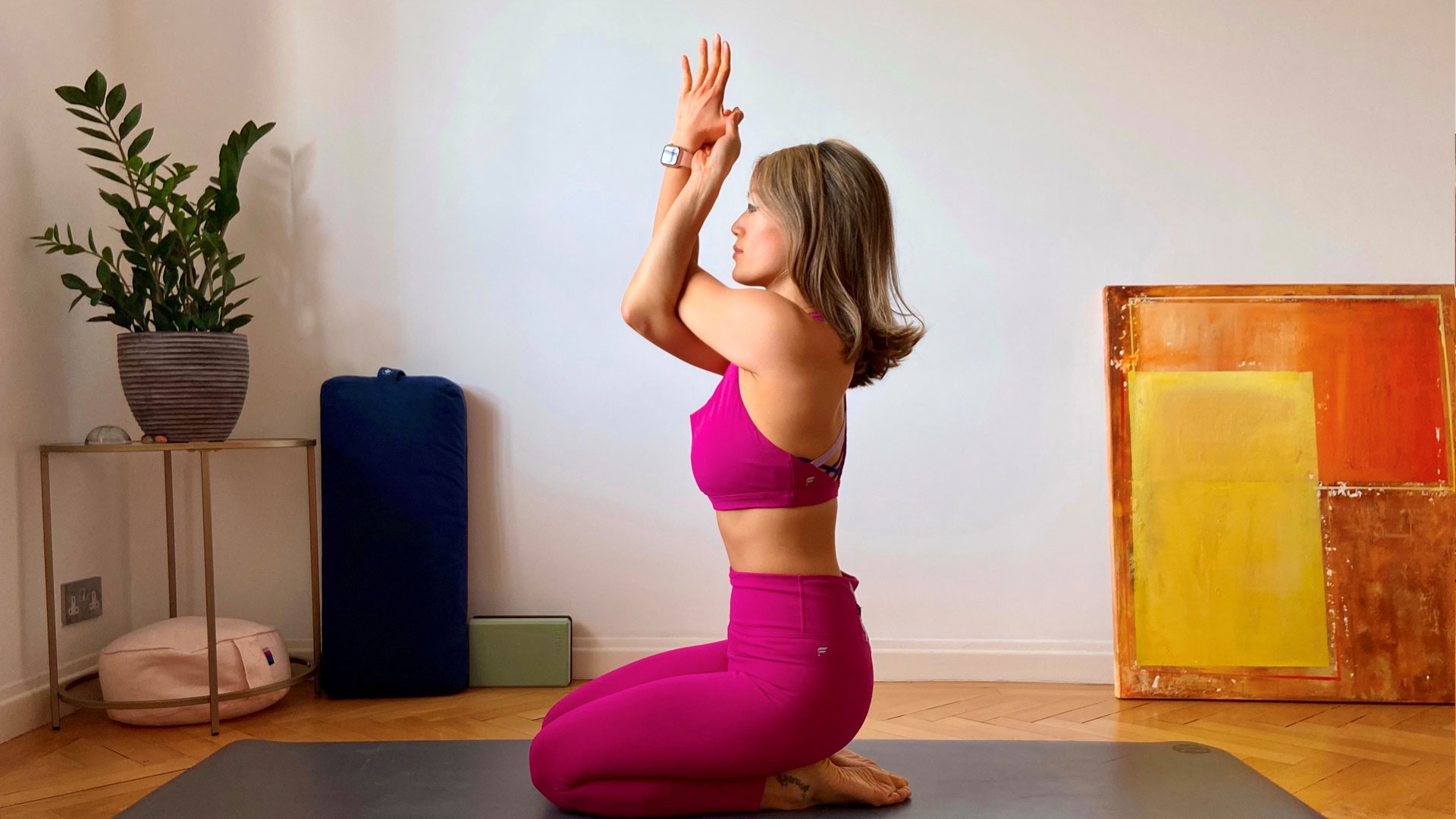
- Start kneeling on the floor and place a blanket under your knees if required. Lengthen your spine, broaden across your collarbone, and relax your shoulders.
- Extend your arms out either side of you and bring your left arm over your right, and then bring your palms together.
- Soften both of your shoulders away from your ears and gently press up with your elbows.
- Hold for five deep breaths.
- Repeat on the second side.
Expert tip: In this pose, you want to feel your shoulder blades moving apart and down your back. Avoid this pose if you have any shoulder pain or injuries.
Benefits of this yoga exercise: Lots of people store tension in the back of their shoulders and neck, this pose releases the tension by expanding the back muscles, which are connected to the shoulders. It also helps to calm and stabilize your mind.
Want to try more? We've put together step-by-step guides on core yoga for building stronger abs.
Born in Hong Kong and based in London, Sarah Highfield is a leading yoga teacher and writer, as well as the founder of Yogagise Yoga. Sarah has been practising yoga since 2003 and teaching yoga since 2015. She has taught at prominent studios including Bodyism & Yogabambam Hong Kong. She also leads yoga teacher trainings, as well as at high profile events including Om Yoga Show London and World Yoga Festival. Additionally, Sarah runs her own yoga retreats, alongside collaborations with Helios Retreats, Lululemon, London Fashion Week, Mortimer House & Catherine’s in Antigua. She has also featured broadly across high profile print and online media. Sarah believes there is a style of yoga for everyone and encourages students to discover what works for them. In her free time, she is a big foodie, loves to travel and spends as much time as possible with family and friends.
-
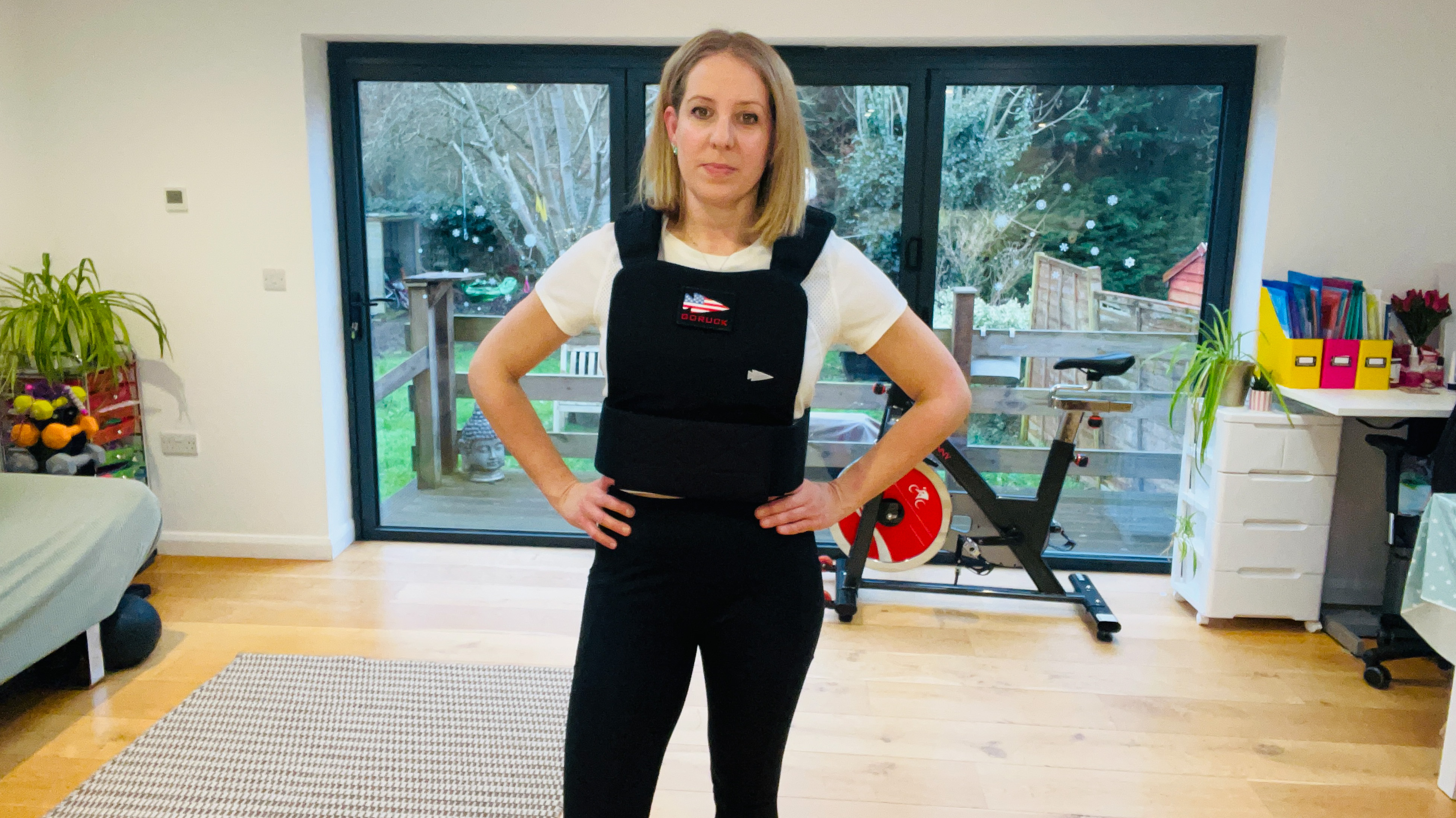 I’m a personal trainer and I tell all my clients to do this weighted workout to build muscle and bone health
I’m a personal trainer and I tell all my clients to do this weighted workout to build muscle and bone healthMake home training even more effective
By Maddy Biddulph Published
-
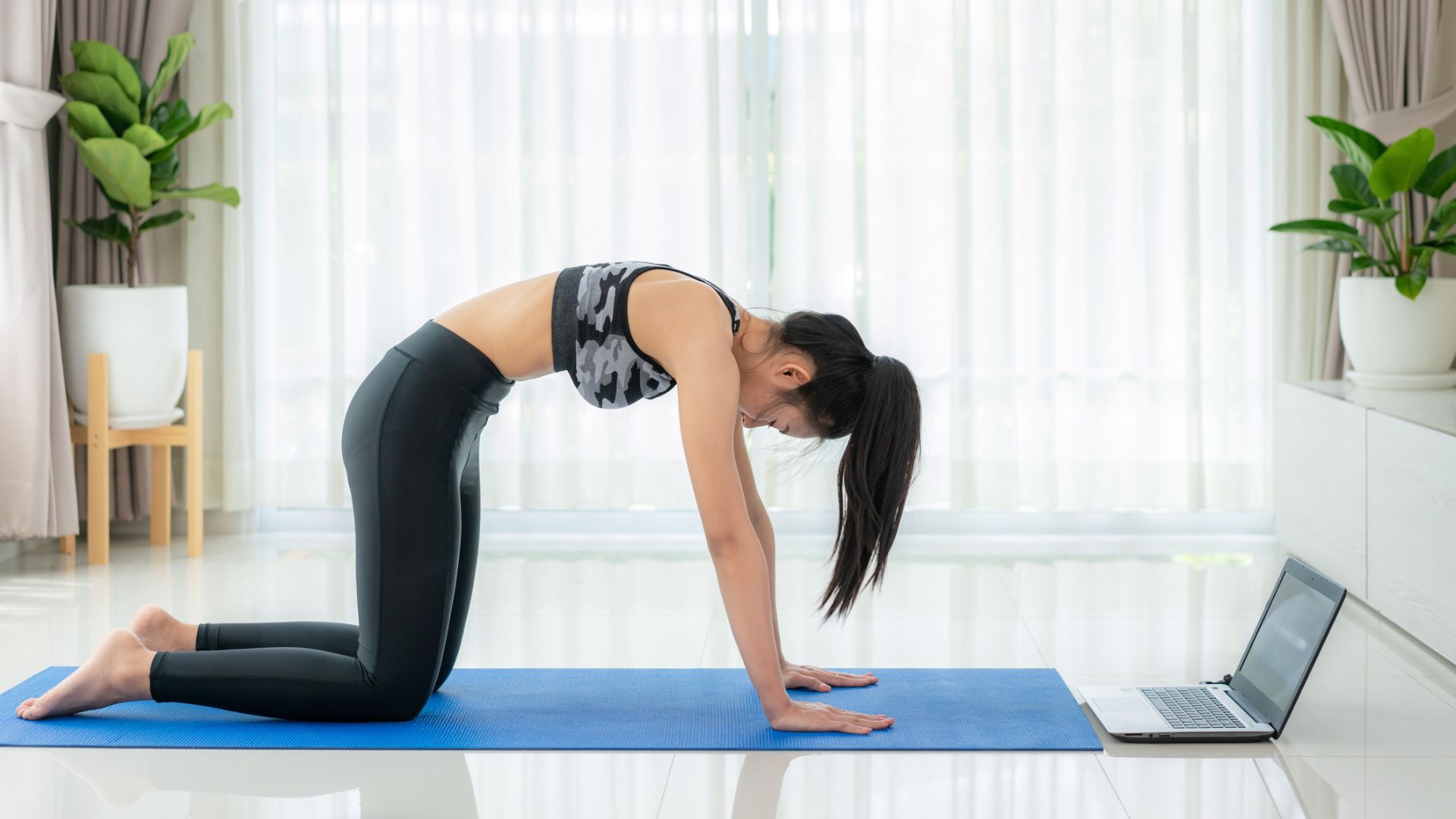 I'm always stiff from sitting, so I tested out a 12-minute morning mobility routine to see if it could help
I'm always stiff from sitting, so I tested out a 12-minute morning mobility routine to see if it could helpThe short routine taught me a lot about my body
By Becks Shepherd Published